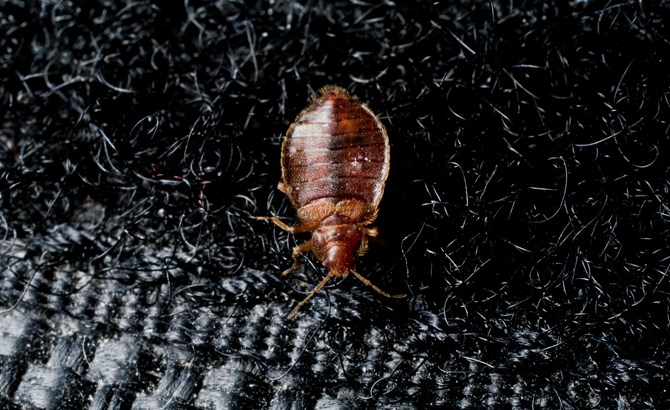Bed bugs are small, oval, brownish insects that live on the blood of animals or humans. Adult bed bugs have flat bodies about the size of an apple seed. After feeding, however, their bodies swell and are a reddish color. Identifying bed bugs and removing them from your home or business can be a difficult task.
Bed bugs do not fly, but they can move quickly over floors, walls, and ceilings. Female bedbugs may lay hundreds of eggs, each of which is about the size of a speck of dust, over a lifetime.
Immature bed bugs, called nymphs, shed their skins five times before reaching maturity and require a meal of blood before each shedding. Under favorable conditions the bugs can develop fully in as little as a month and produce three or more generations per year.
Bed bugs may enter your home undetected through luggage, clothing, used beds and couches, and other items. Their flattened bodies make it possible for them to fit into tiny spaces, about the width of a credit card. Bed bugs do not have nests like ants or bees but tend to live in groups in hiding places. Their initial hiding places are typically in mattresses, box springs, bed frames, and headboards where they have easy access to people to bite in the night.

Over time, however, they may scatter through the bedroom, moving into any crevice or protected location. They may also spread to nearby rooms or apartments.
Because bed bugs live solely on blood, having them in your home is not a sign of dirtiness. You are as likely to find them in immaculate homes and hotel rooms as in filthy ones.
If you wake up with itchy areas you didn’t have when you went to sleep, you may have bed bugs, particularly if you got a used bed or other used furniture around the time the bites started. Other signs that you have bed bugs include:
- Blood stains on your sheets or pillowcases
- Dark or rusty spots of bedbug excrement on sheets and mattresses, bed clothes, and walls
- Bedbug fecal spots, egg shells, or shed skins in areas where bedbugs hide
- An offensive, musty odor from the bugs’ scent glands
If you suspect an infestation, remove all bedding and check it carefully for signs of the bugs or their excrement. Remove the dust cover over the bottom of the box springs and examine the seams in the wood framing. Peel back the fabric where it is stapled to the wood frame.
Also, check the area around the bed, including inside books, telephones or radios, the edge of the carpet, and even in electrical outlets. Check your closet, because bed bugs can attach to clothing. If you are uncertain about signs, call an exterminator like Milberger Pest Control, who will know what to look for.
For more information about bed bugs, visit https://www.milbergerpestcontrol.com/kansas-city-bed-bug-pest-control/ and call Milberger Pest Control at (816) 761-1313 in MO and (913) 384-6760 in KS.
